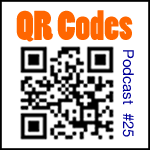
Handheld computers are everywhere. From mobile phones to handheld games, it's a very familiar sight to see people of all ages gazing into screens that they can hold. Schools are discovering that handhelds like iPod touch and iPad make great learning tools. In fact, handhelds can play a big part in project based learning. Not only do projects motivate students because they use exciting handheld technology, but they also lend themselves to student voice and choice. Watch or read below to be inspired to bring project based learning into your classroom, learn strategies for creating effective driving questions, and see how an iOS handheld can play a role in the planning, research/investigation, and presentation of projects.
View the 18 minute video on Vimeo, on YouTube (Part 1 and Part 2), or in iTunes (#24) or download the video.
I've been an advocate for mobile learning since 2001 when fifth graders in the my classroom each received a Palm handheld. We used a variety of software applications everyday. Favorite apps were ones where student created something to share with others.
 Today it seems the handhelds of choice for education are iPod touch and iPad. Use these devices along with other kinds of computers for education and you've got mobile learning. Mobile learning can happen anywhere: in a classroom, at the dining room table, on a bus, in front of a science exhibit, at the zoo…anywhere! Portability is not as important as the ability of the learner to connect, communicate, collaborate, and create using tools that are readily available. Apps, podcasts, and websites provide options for personalization of learning inside and outside the classroom. Students have access to learning resources when and where they are needed.
Today it seems the handhelds of choice for education are iPod touch and iPad. Use these devices along with other kinds of computers for education and you've got mobile learning. Mobile learning can happen anywhere: in a classroom, at the dining room table, on a bus, in front of a science exhibit, at the zoo…anywhere! Portability is not as important as the ability of the learner to connect, communicate, collaborate, and create using tools that are readily available. Apps, podcasts, and websites provide options for personalization of learning inside and outside the classroom. Students have access to learning resources when and where they are needed.
These readily available tools are great for project based learning. In fact, let me show you a sample project. It's a 5 minute video I made entirely on an iPod touch. It addresses the question,"What makes a good vice president?"
Let's take a look at the process behind creating a project like mine. I'll share tips for developing driving questions and share how a handheld can play a role in planning, research, and presentation of projects.
Project based learning goes by many names, such as Challenge Based Learning, Problem Based Learning, and Project Learning. Each have a slightly different approach, but all immerse students into a topic.
Project based learning can be described as "Students work over an extended period of time answering a driving question. The question is so deep that it requires students to create a project to share their findings with others."
Unlike an activity that can be completed in one class period, projects can take days, weeks, or months to complete. Instead of the teacher covering material, the teacher develops projects that allow for students to uncover the topic for themselves.
The driving question, also called an essential or guiding question, is a question so open-ended that projects are wide and varied, allowing for student voice and choice.
To devise my driving question,"What makes a good Vice President?" I first looked at Arizona Academic Standards for Grade 8 Social Studies. I chose four concepts and five objectives to address with my project. As a teacher, I would let my students choose a federal government position for their projects.

Driving questions that connect to the real world work best. Good driving questions cannot be answered with copy and paste. The result of students' work should create something new--something that doesn't already exist. Often the solution to a driving question is personalized or localized. Driving questions often begin with Why, What if, How, and Which. Here are some sample driving questions:
- Is it better to buy or lease a car?
- What is the American Dream and who has it?
- Which element on the Periodic Table is most important?
- Why has a woman never been U.S. president?
- What if a football field was a triangle?
- Which simple machine is most important?
- Could the British have avoided the Revolution?
- What if Rose Parks had given up her seat?
- Why doesn't the U.S. use the metric system?
- How can we best stop the flu in our school?
- Are music downloads worth their price?
- Should government bail out businesses?
- What if the world ran out of oil tomorrow?
- Is it more important to know the area or perimeter of an object?
- How do we persuade others?
- How good is our town's water?
Sometimes in project based learning all students or groups of students answer the same driving question. Sometimes students develop their own questions. Like every aspect of project based learning, it depends on what, how, and who you teach.
Sending students off for a couple weeks to answer "What makes a good vice president" won't result in much learning or a quality end product. Developing the driving question is just the first step. To be sure my project included the targeted standards, I attached parameters to the driving question.

After establishing parameters, it's time to create a rubric. I've had the best projects when I've co-created the rubric with my students. I like to create rubrics at Rubistar. I can select categories and indicators. I open a Rubistar template on my computer and throw it on a projector in front of the class. I have a pretty good idea of what the rubric should contain, and I add student suggestions. I especially use student input when deciding how much importance to give each category. When students help design how they are going to be evaluated, they feel more ownership of the process. They also more clearly understand the the goals of the project since they were a part of creating them.
Once the rubric is finalized, I make sure each student has a copy. You can save the rubric as a PDF so students can save and view it in the iBooks app. I ask students to review their copies each time we have work time on the project to remind them of the standards we agreed upon. I’ve also found it useful for students to score their product and a buddy’s product a few days before the final product is due. This way they can spot specific areas to improve before I do my final grading using the same rubric.
iPod touch and iPad can help students plan, research, and present their projects. Let's glimpse just a few of the many apps and possibilities.

 Start by planning an anchor video or activity. A short podcast or video can give enough information to spark interest in and questions about the topic. The entire class may view the same video or perhaps the teacher has hand-picked videos for each driving question or groups of students. If not a podcast or video, perhaps there's a class activity that can be the anchor activity. With hundreds of thousands of apps, podcasts, and iTunes U videos, chances are you can find something that grabs student interest.
Start by planning an anchor video or activity. A short podcast or video can give enough information to spark interest in and questions about the topic. The entire class may view the same video or perhaps the teacher has hand-picked videos for each driving question or groups of students. If not a podcast or video, perhaps there's a class activity that can be the anchor activity. With hundreds of thousands of apps, podcasts, and iTunes U videos, chances are you can find something that grabs student interest.
As for the planning piece for student, mind mapping apps can help in planning projects and guiding research. They can also help in outlining scripts. Idea Sketch is free and makes it easy to connect ideas. You can toggle between map view and outline view.

Similarly, Popplet for iPad makes joining ideas a cinch. There are many alternative concept mapping apps in the App Store.

Handhelds can definitely play a a role in investigating and researching the driving question. Student will probably use the Google search box in Safari to find information. Safari is the web browser built into every Apple handheld, but there are browsers that can facilitate better online researching.
Atomic Web Browser adds many features needed when researching, including the ability to search for text on the page that's currently open. Another important feature is tabbed browsing. Users can open multiple links from from one page. They load in the background, ready to be searched and read.

Mostly likely students will copy and paste notes into apps like Notes or or Evernote. Or, because it's annoying to switch between apps, many will want to write their notes on paper. iPad users will like Side by Side. It's a multiple-screen browser and file reader with note taking capabilities. You can have up to four different windows on the screen at once. This makes it excellent for comparing information from multiple sources while taking notes.

Researching might not use the web. Instead, students might investigate the topic themselves. For example, students looking into the topic of homelessness may record interviews at a local shelter. Or, student may be investigating how to convince shoppers to return their carts to the proper locations. They might gather data using a spreadsheet app and take photos and video in a local grocery store parking lot.
Certainly handhelds play a role in uncovering information about driving questions. Those mind mapping apps can be useful in organizing all of this information. After all, the next step is to present the information to others.

The whole point of creating a project is to go public with what's learned. Presentation of the answer to the driving question doesn't have to be standing up in front of the class with a slide show. Though, that is certainly a possibility with Keynote for iPad. With a video adapter, a slideshow can be viewed on a large screen by an audience.
 Narrate a series of images using the SonicPics app.Presentations can be narrated slideshows, like "What makes a good vice president?" I used the SonicPics app to record a voiceover to a series of images. In fact, images are likely to be important in most any project.
Narrate a series of images using the SonicPics app.Presentations can be narrated slideshows, like "What makes a good vice president?" I used the SonicPics app to record a voiceover to a series of images. In fact, images are likely to be important in most any project.
For images, students may take their own photos. Devices with cameras make is easy to snap pictures and import those pictures into another app. If your device does not have a camera or the project requires a photo that cannot be taken by the student, then it's necessary to seek out images on the web.
Since projects are designed to be shared with others, it's important that students have permission to use the photos they take from the web. In most cases, a public domain or Creative Commons license images gives the public the freedom to use it in projects.
To find images on the web that are labeled public domain or creative commons, students can perform an Advanced Google Image Search. The mobile version of Google omits that Advanced Search link, so you can view the desktop version or follow a hyperlink to go directly there. Enter what you are looking for and change Usage Rights to "labeled for resuse with modification."

Tap a thumbnail image to be transported to the page with the image. You may need to tap the image again to see it full size. To save an image, simply tap and hold and then tap Save Image. It is stored in the Photos app under the Camera Roll or Saved Images album and ready to import into a variety of apps.
In my "What makes a good vice president?" example I imported saved photos into apps like Comic Touch, Doodle Buddy, and Photoshop Mobile to add and edit images. Those apps then save their images into the Photos app where they can once again be imported back into other apps.
Other ways learners can present their projects include creating comics. Students can bring in images into the app and add speech bubbles and captions. These can be saved as images and posted to blog, wiki, or any kind of website. Or then can even be printed out and bound in a book. A favorite comic creation app for iPod touch and iPad is Strip Designer.
Flipbook is an animation app. Students can import images and draw on them. Duplicating frames and making small changes creates an animation effect when the frames are played quickly in succession.
StoryKit lets users combine image, drawings, text, and voice into an electronic storybook. The storybook is saved online as a webpage.
iMovie is available for newer handhelds for movie making, but many prefer ReelDirector because it works on older iPod touches and iPads. Combine images, video, and audio with ReelDirector. Splice, trim, and split video clips, and pan and zoom video and photos. You can also add titles and subtitles, and choose from 28 transitions.
Slideshows, comics, animations, storybooks, and movies are just a few of the many ways students can present their projects. It's nice to give students choices of apps to use. No matter what's used to present their answers to driving questions, students should always consider their audience. Clearly identifying an audience for the presentation will help students communicate with them. Is the project for fellow class members? Are fifth graders presenting to their second grade partner class? Are eight graders presenting their shopping cart research and solutions to the grocery store manager?
Project based learning makes students managers of their own learning. They learn to work collaboratively on projects and communicate their findings with others. Gadgets like iPod touch and iPad can play a role in planning, research, and presentation of projects. Yes, it takes effort from the teacher to review standards, craft driving questions, prepare an anchor activity or video, and design a rubric. However, once the prep work is done, the teacher is free to guide students toward quality projects that reflect deep learning. With the right driving question and mobile learning tools, learning is in hand!







